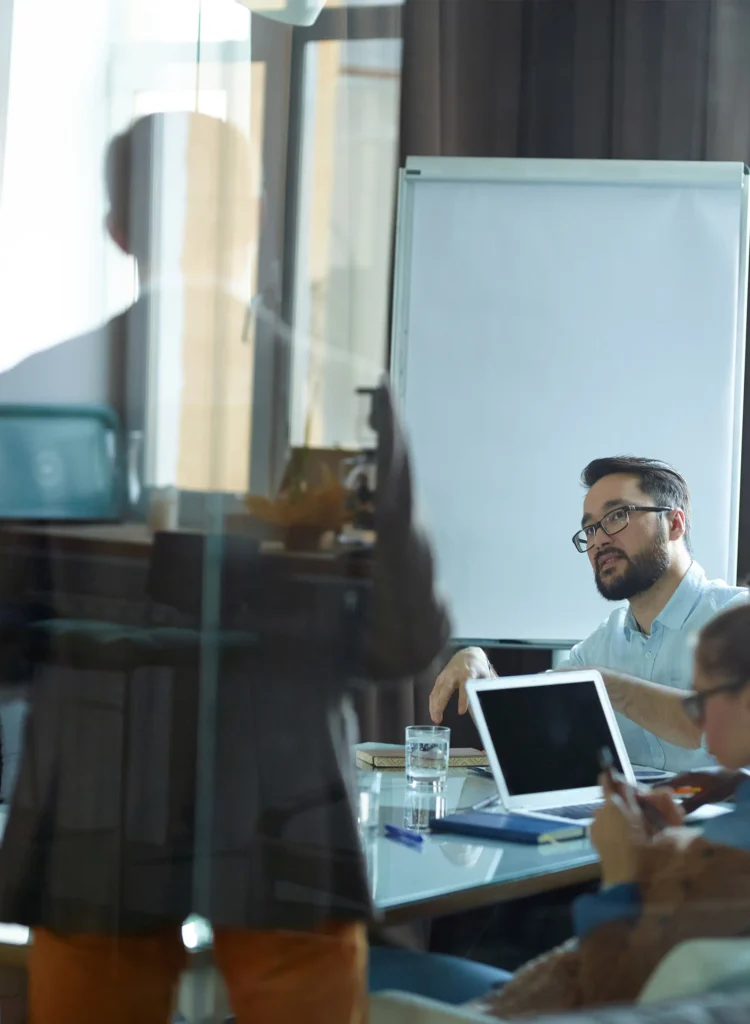It’s what your audience say it is,
we help manage this meaning.
We define brand as the significance and meaning that your audience assigns to you and your offerings. The brand is ultimately in the hands of your audience, not the business itself.
Our role is to guide business leaders in strategically shaping these perceptions, leveraging the power of long-term brand thinking to manage and influence how their brand is perceived.
Branding involves analyzing, planning, and implementing experiences specifically made to convey the desired message to the intended audience. To begin “managing meaning,” it’s essential to first define clearly what you want to convey, and to whom.
This stage of defining is a crucial initial step that involves aligning the leadership team around ‘big brand questions’ and having a clear direction on where to head towards.

What is the offer, descriptor, proposition, or narrative of your product or service?
What are our guiding values? How do we prioritise decisions and actions?
In turn, this affects:
Who is your ICP, what’s your value proposition, and how do you add value/make their lives better?
In turn, this affects:
What is your brand’s purpose, vision and mission? What drives you to make impact and what’s your future like?
In turn, this affects:
What are our unique qualities that distinguishes us from competitors?
What are your brand’s values, personality and the way you carry yourself?
In turn, this affects:
Once defined, a brand’s principles should flow through the entire business, from the inside out. Viewing all business operations and strategy through the lens of brand strategy.
Brand-thinking acts as a bridge, connecting the tangible aspects of the business with strategic goals. This ensures that every business activity aligns with the intended perception leaders wish to associate with the brand, reinforcing values in every aspect.
The bridge between brand and business strategy lies in their interdependence and collaboration to achieve common goals. This relationship can be illustrated as follows:

An effective strategy is fluid and adaptable, seamlessly adjusting to insights gained in market and audience preferences over time. That informs and refines its course over time.
The key lies in fine-tuning the approach with each shift, not overhauling it entirely. And fostering innovation as a fundamental mindset, not confining it to a single department.
Brand thinking should actively involve, inspire, and motivate both internal stakeholders and external customers. It should guide decision-making at both micro and macro levels, emphasizing intentional design and thoughtful execution.
This process calls for collaborative, engaged, and energized leadership. For effective brand strategy implementation, leadership teams must proficiently introduce the brand strategy internally and externally. This involves setting meaningful goals and diligently working toward the associated objectives.
You can apply brand thinking to shape meaningful experiences in various essential areas, such as:

Brand thinking is instrumental in aligning leadership, staff, HR, and shaping the overall workplace culture. It defines behaviors, team dynamics, and guides interactions within and outside of the organization.
This approach ensures that the principles of your brand are woven into the fabric of leadership decisions, employee routines, and the overall work environment.
Encompassing HR, recruitment, routines, rewards, and the workplace environment. This involves defining a compelling Employee Value Proposition (EVP), and carefully crafting your Employer Brand.
By applying brand principles, you can articulate your purpose and values, subsequently designing the employee experience and internal communications to foster engagement.
At their core, businesses serve customers, yet many fail to create products or services that really address customer goals and needs. The true essence of a brand lies in what it does and how it provides solutions.
Branding isn’t a last-minute paint job; it’s getting serious about shaking things up with innovation and customer-friendly product development. Creating services and products that are not just good but awesome.
It’s about understanding your customers on a whole new level, anticipating their needs, and speaking their language. Your brand isn’t just a tagline in the sales script; it’s the essence of your sales strategy.
A sales cycle where every interaction is on-brand, every pitch tells a story with the prospect as the protagonist, and every deal strengthens your brand’s connection.
It’s crucial to have a well-defined customer journey that’s always getting better. Imagine having a system that not only enhances your brand but does it at every single step—now that’s a game-changer.
Dive into brand principles to stay ahead of the curve in understanding your customers’ ever-changing behaviors and desires. It’s all about empowering your customers, building unwavering loyalty.
How a business expresses itself and presents its image is vital for anchoring communications in its narrative and the enduring significance a brand aims for customers to embrace.
Creative and strategic design should encapsulate the personality, tone of voice, and style necessary to forge a recognizable and unique meaning for the audience. Communicating purpose, why and not just what.
Subscribe to the upmarch academy newsletter for valuable brandbuilding insights and actionable tips.